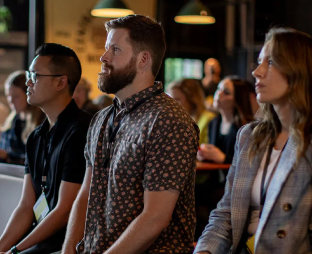Today’s SEO is far more nuanced and sophisticated than even just a few years ago.
That’s because search engines are more fluid, faster, and smarter, too.
They can understand what you’re looking for and why you might be looking for it, in fractions of a second, before completely personalizing the results you see.
Then they learn — on the fly — and iterate to get more accurate over time.
Search marketing now needs to change as a result, too.
Because just doing “SEO” or “PPC” means you’re barely scratching the surface. That old-school, ‘siloed’ mentality in today’s world means you’re running at half-speed.
Here’s why, and how you can fix it to catch your competition sleeping at the wheel.
How B2B Search Engine Result Pages are Evolving
SEO used to be easy a decade ago.
Search engine result pages (SERPs) looked largely the same, no matter what you searched for.
Believe it or not, that made a marketer’s job easy.
There were only so many variables they needed to worry about:
- You could pay to be listed, or
- Slowly work your way up the organic positions.
And that was it!
Competition wasn’t nearly as fierce (or expensive) as it was today and there were only two search marketing methods to worry about (with little overlap between those two as well).
Unfortunately, that’s not the case today.
Go ahead and search for anything now. It almost doesn’t even matter what you choose.
For example, “pizza” sounds good. So let’s take a look:

Whoa. Where are the typical search results you’re used to seeing?
Instead, you have ad placements, local placements, and what seemingly looks like the entire history of pizza on the far right in the Knowledge Graph (we’ll come back to this in a second).
This result layout isn’t ‘static’ though, either. Check out what happens when you do a branded search for “Pizza Hut.”
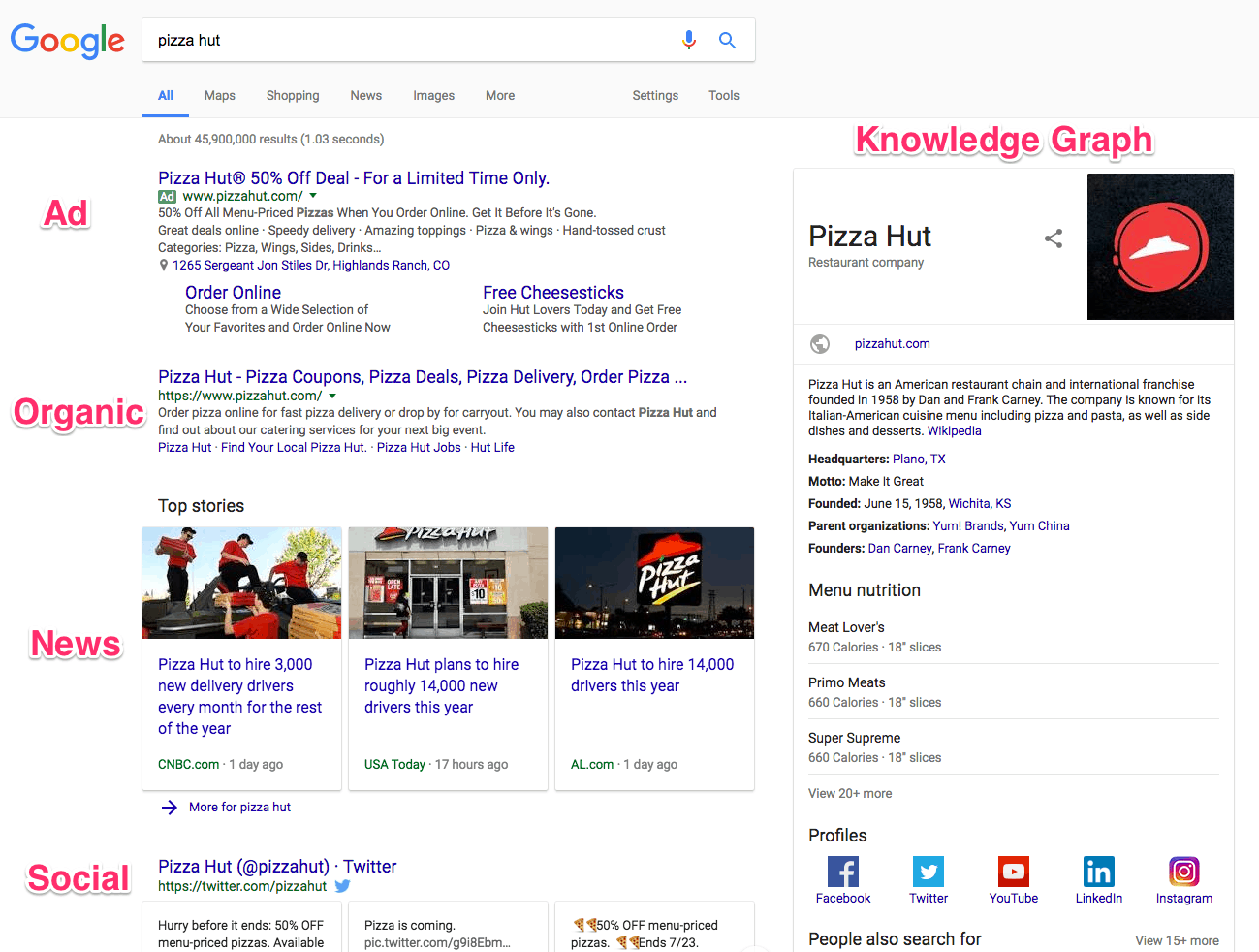
The SERP layout changes again, surfacing new information that’s specific to Pizza Hut.
So what’s going on?
A search engine’s goal is to provide the best possible answer to your search query. And over the past few years, they’ve gotten incredibly good at understanding the context behind what you’re asking for.
Now, Google doesn’t just spit back the keywords you typed in. Instead, they’re looking for the underlying intent used when you search.
They’re trying to understand your goal or objective and give you a comprehensive answer (even if you didn’t explicitly ask for it).
“RankBrain has become the third-most important signal contributing to the result of a search query”, according to Greg Corrado of Google.
RankBrain is powered by artificial intelligence — yes, really — to learn, at scale, what people really want when they search for something.
They’ve been perfecting it, little by little, for half a decade. And it’s the reason Google can quickly shift gears, displaying different results and powering the Knowledge Graph on the right-hand side of a SERP when appropriate.
Ok, fine. But what does this have to do with B2B searches?
In a word: Everything.
B2B searches are no different (as you’ll see in a minute). The SERPs pull in bits of data from all over the internet to provide the best answer possible.
That means your job isn’t just to do “PPC” or “SEO.” Today, you need to do it all at the same time with comprehensive search campaigns.
It means you, like Google, need to understand what people are searching for and why they’re searching for it so that you can show up in every place possible.

Traditionally, companies would work with a dedicated SEO team or a primary PPC lead.
However, as you’ve seen, this ‘siloed’ approach now backfires. Your “awesome SEO guy” may, in fact, be awesome. But he’s still missing out on at least 66% of your potential SERP market share.
Running at one third your capacity doesn’t cut it today. There are too many competitors, and things evolve too quickly.
Siloed marketing departments are literally falling behind faster than they’re keeping pace.
There is good news, though.
Most of your competitors are undoubtedly still operating under this decade-old approach. If you can understand how search engines are evolving today and how to align your strategy, you’ll easily grab a head start.
And that all starts with understanding how the ‘big three’ facets of search work today.
1. Paid Results
Paid campaigns are most often used for generating leads. You can track Cost Per Leads to generate conversions, compare it to your internal close rate, and come up with the new revenue you’re pulling in above and beyond ad spend.
When done correctly, it’s fairly straightforward.
Remarketing ads can also help you build brand awareness or nurture leads through a long, complex sales cycles. “Conversion rates actually increase the more users see an ad within remarketing campaigns,” according to WordStream.
PPC ads on search engines haven’t evolved all that much since debuting almost a decade ago.
Sure, the right-hand column ads were dropped last year in favor of four now at the top. And you now have expanded text ads to include additional information.
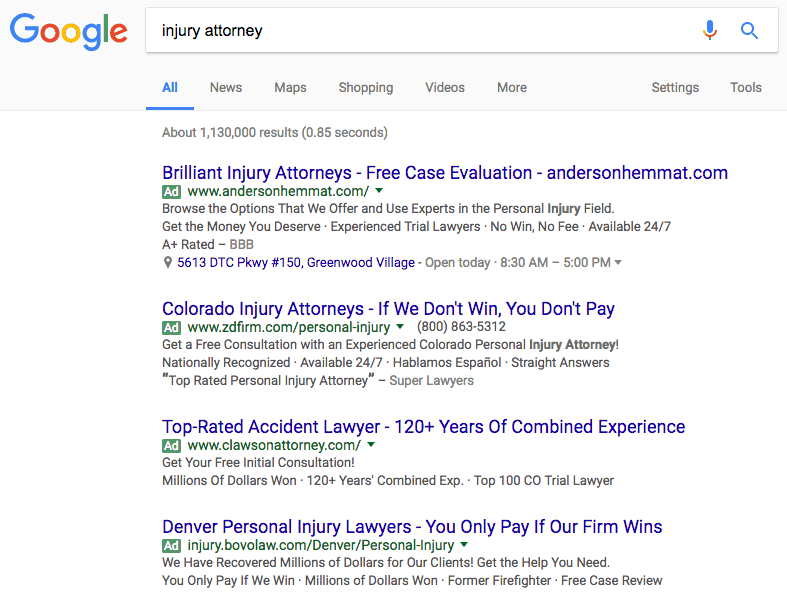
But I think we can all agree those are pretty minor in the grand scheme of things.
One issue you do have to worry about, though, is a searcher’s intent.
Let’s you say you search for “construction software” and see the following SERP. Now, look in detail at the individual results in the paid ads:

You’re looking at construction software products for both residential (B2C) and commercial customers (B2B).
People using this query are looking for one or the other — not both. Guess wrong, and you just wasted a bunch of money because you weren’t taking all of this outside context into consideration.
Otherwise, the big change comes once again in the number of advertising options you get now.
Product-related searches provide not only the first four positions, but also the entire right-hand side with Shopping Campaigns.
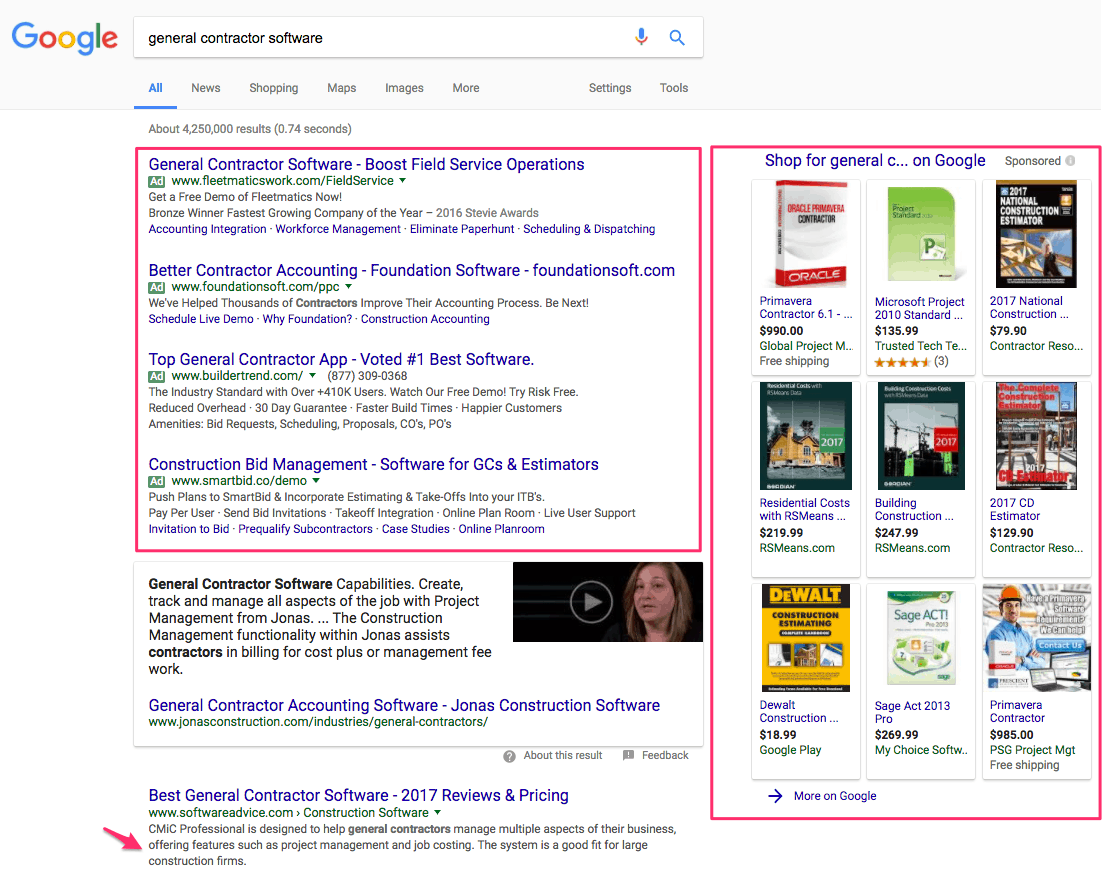
The ramifications of this layout are that your organic results don’t even start until the very bottom of the fold.
So paid campaigns can (and should) also be used for increasing search visibility.
Because the final big PPC benefit is that it helps you figure out which keywords perform best, so you can take that knowledge back to lead your organic campaigns.
2. Organic Rankings
Your best long-term ROI is going to come through organic search.
The reason is that you spend time on the front-end building up momentum, before the flywheel kicks in and starts producing compounding results. (Where more traffic leads to more visits which lead to more shares, leading back to more traffic and repeating this cycle over and over.)
But there are a few problems with organic search.
We’ve already seen one of those: Its SERP ‘footprint’ is diminishing (or at least being deprioritized) in favor of other search verticals.
So the first step is to be more strategic is how you’re going after new customers.
For example, people will use different types of keywords to find different types of pages. You can split those keywords up by funnel stage to help you figure out if they’re looking for product comparisons or an individual product page.
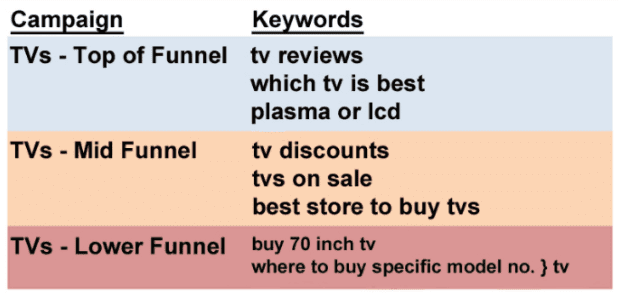
That means “SEO” now also needs to loop in content writers and designers to create better pages that better align with each keyword’s intent.
The last primary issue is the massive amount of time and resources it takes to slowly start showing up for all of your industry’s long-tail searches.
One of the reasons is because you’re competing head-on against big brands which tend to get the benefit of the doubt many times.
However, there are a few tricks you can use to outsmart them.
One perfect example is leveraging featured snippets to increase your SERP click-through rate. HubSpot found that these featured boxes can increase CTR by as much as 114%.
Here’s how it looks. Take another look at this example from a few seconds ago:

Almost zero organic results above the fold, except for the one in the middle. It receives a huge paragraph blog where content from the page is previewed. And then there’s even a video thumbnail that sticks out (in a good way), almost begging for your click.
Now here’s the next trick.
Notice something interesting about the first three results on this SERP for “general contracting software”?

Yes, technically these are organic listings.
The middle and bottom positions on this first-page result show a few individual software products like you’d expect.
However the first three are directories, aggregators, and review sites.
They’re technically digital placements, even though they’re dominating the organic search rankings, too.
3. Digital Placements
Digital placements are the influential third-party sites that (1) dominate search visibility in your category and (2) take the majority of searchers away to their own site.
For example, check out the top paid results for “best contractors”:

Only one out of the top four paid results is an individual company. The rest (HomeAdvisor, Angie’s List, and the BBB) are digital placements.
Now let’s scroll down to the organic listings to see who’s ranking at the top.

Once again, same story here too. So not only are these sites dominating the paid results but the organic ones as well.
Let’s take a look at one more example to see who gets prime placement on the organic listings.

The top paid results are as expected, while the first organic result (that gets a Quick Answer layout) is Capterra, one of the same digital placements we saw earlier.
Ok.
The likelihood of any brand taking this spot from them is slim to none (at least in the short-term). This isn’t their first rodeo.
So if we can’t outrank them, let’s see what they can offer us.
Head over to Capterra’s website and look in the footer under “Vendors.”

Interesting… they offer PPC services on their own website to help you gain access to their six million plus site visitors.

So let’s pretend we’re a potential customer for a second. We do one of the same searches from earlier (like “construction accounting software” and head over to Capterra’s site to see the following page:
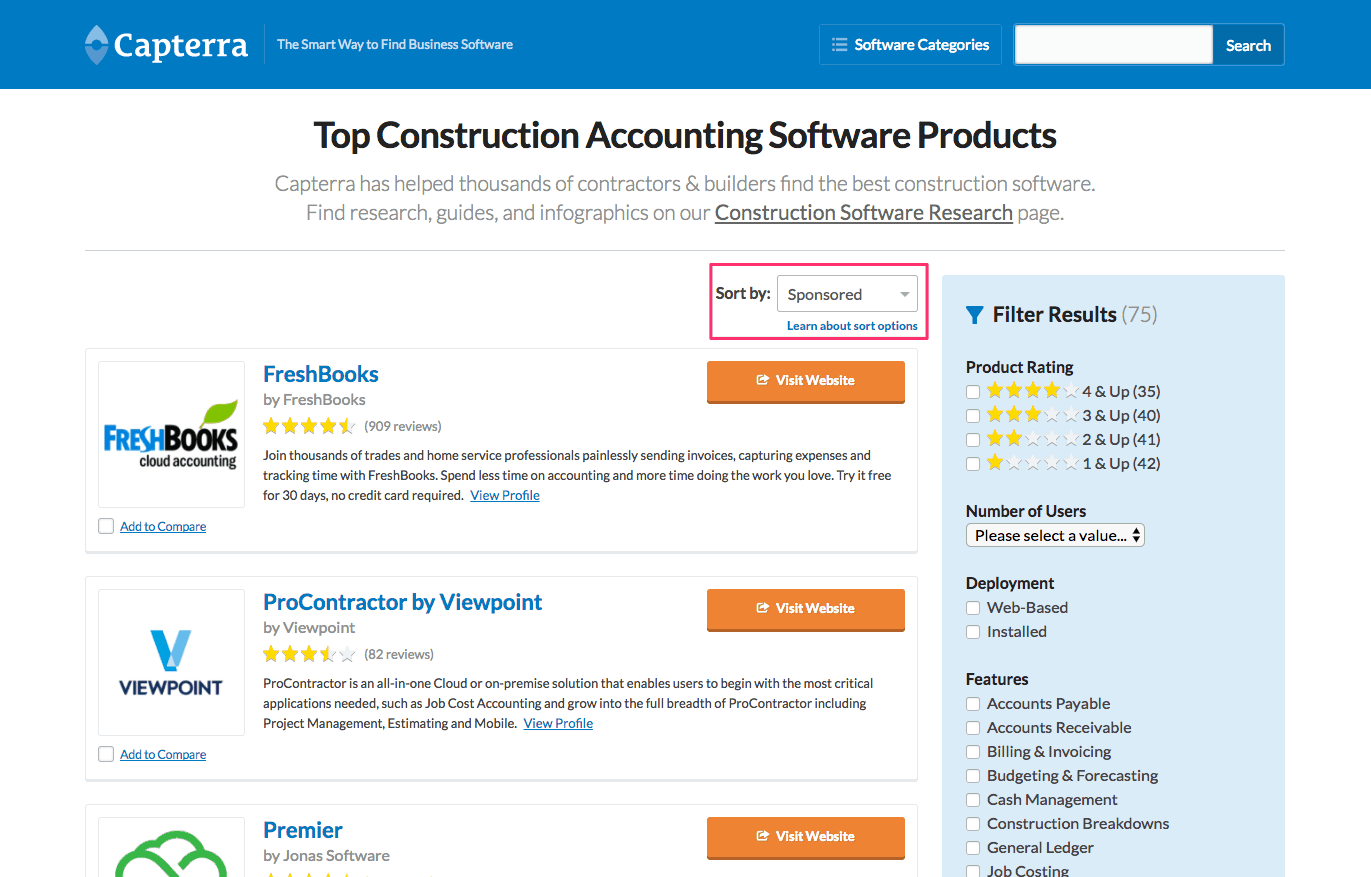
The first results you’re seeing on this page now are ones using their PPC sponsored or advertising services.
See?
Search marketing isn’t just “SEO” or “PPC” today. It’s all of those things.
Today’s version means that you go to these digital placements — even though their name isn’t Google — and do whatever’s necessary to rank well there, too.
Because that’s how customers are shopping for your products before they even know who you are by name.
Conclusion
Today’s search engine result pages change based on every single type of search you perform.
They pull in data from all sources, whether that’s the news, social media, paid campaigns, or even digital placements to help augment the typical organic results.
That’s why “SEO” doesn’t just mean “SEO” anymore. Otherwise, you risk voluntarily forfeiting over 66% of the SERP to your competition.
Instead, comprehensive search marketing involves pulling together SEO, PPC, copywriters, designers, and strategists to replicate how customers look for you today, and how you can be everywhere at every possible moment.
And that’s why your goal today isn’t just “ranking #1.” It’s monopolizing the entire SERP and increasing marketing qualified leads as a result.
-
 CEO
Garrett Mehrguth
CEO
Garrett Mehrguth
Did you enjoy this article?
Share it with someone!
